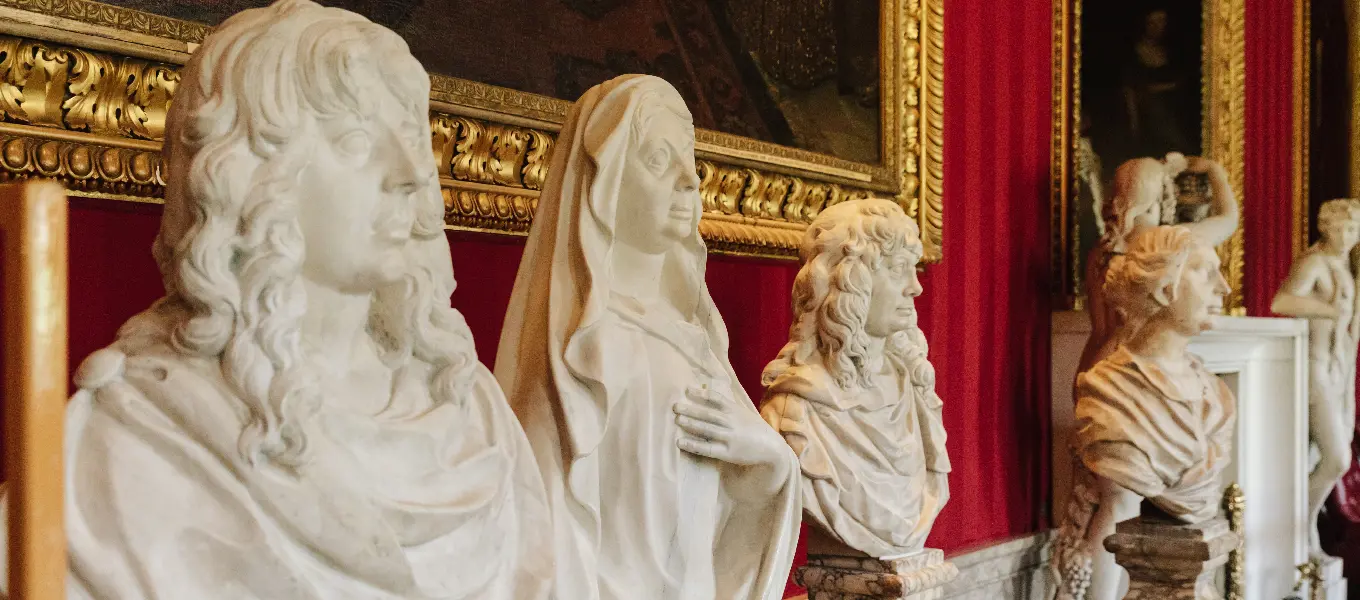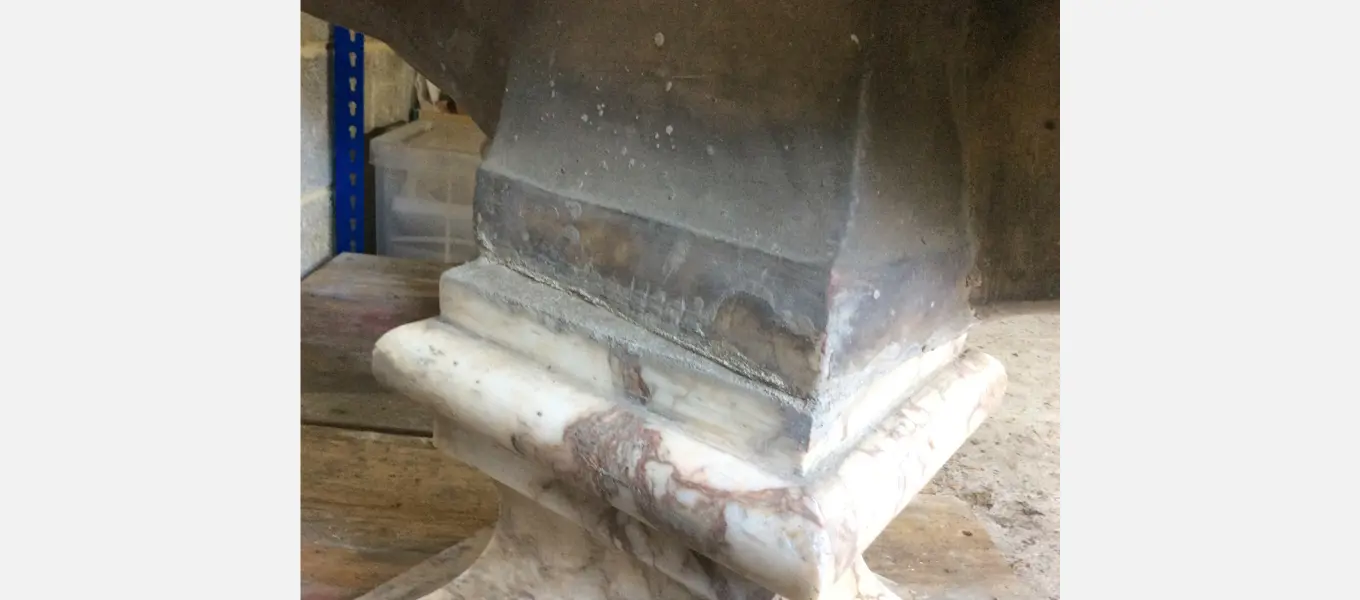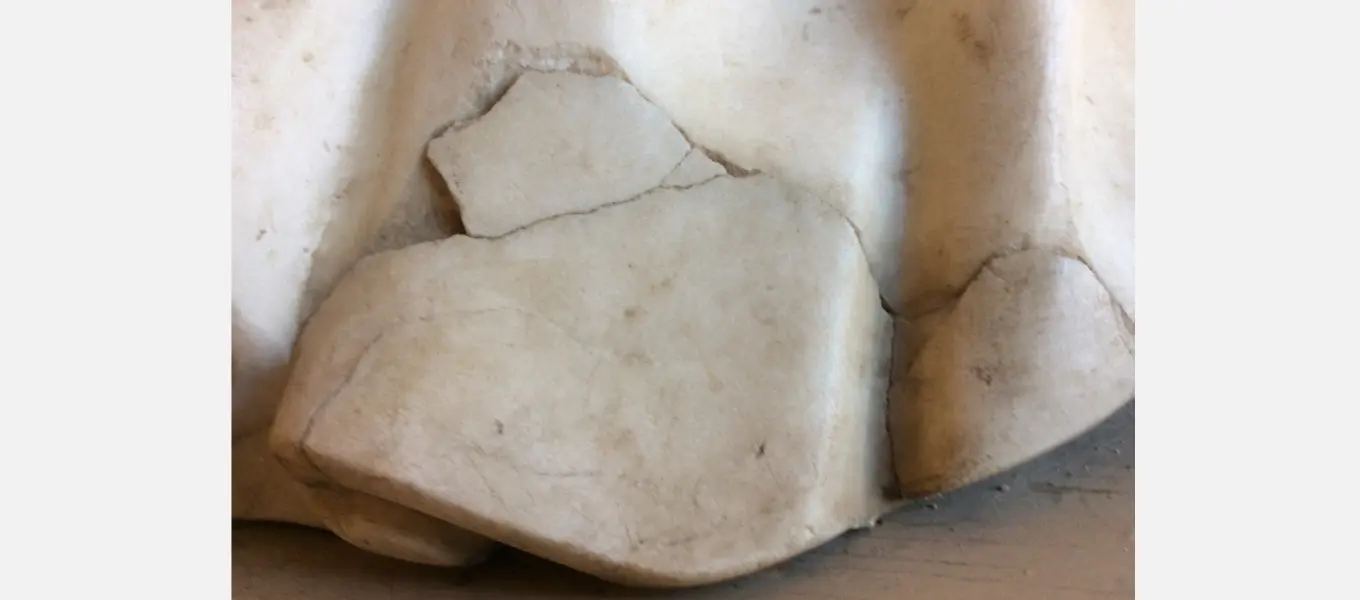As part of the Life Stories exhibition the collections team reunited six sculptures all belonging to the same family. These sculptures are attributed to Jasper Latham (1636-1693), a London sculptor who notably worked at St Paul’s Cathedral and Hampton Court Palace
Latham was associated with the architect of Chatsworth, William Talman, and, later, Sir Christopher Wren, and was awarded the honourable position of City Mason in London. Latham appears to have been born in London and spent his entire career in the city, however his connections meant that wealthy patrons would have been familiar with his work and able to commission monuments through his workshop.
Latham is the designer and probably the sculptor, of tomb monuments in Westminster Abbey; Christ Church Cathedral, Oxford; and St Peter and St Paul, Bordern, Kent. However, the sole survivor with a figure is in the Croydon Minster commemorating Archbishop Sheldon. Latham also completed a statue in lead of Captain Richard Maples for Trinity House, Deptford and re-worked the face of a statue to resemble Charles II. The figures all share the same blank, heavy facial features as seen in the Chatsworth works.

The works at Chatsworth are attributed to Latham and depict members from two generations of the same family: the parents, William, 2nd Earl of Devonshire (1590-1628) and Christian, Countess of Devonshire (1595-1675); and 4 of their children, Anne, later Lady Rich (1611-1638); William, future 3rd Earl of Devonshire (1617-1684); Charles, later Colonel in the Royalist Army (1620-1643); and Henry who died in childhood (d. 1620).
The 2nd Earl married Christian in 1607 or 1608. Although he was initially unhappy that she was five years younger than he, she brought a substantial dowry to the marriage, and the pair appear to have made a good match. On the 2nd Earl’s death, when the heir William was just ten, Christian managed the debts and upwards of thirty lawsuits associated with the estates. The Countess maintained wardship of the children and resolved the debts, thus ensuring that when William came of age in 1638, his lands and estates were settled on him as he became 3rd Earl.
As Dowager, Countess Christian moved to Roehampton, Surrey in 1650, and entertained the remnants of the Royalist court during the interregnum and hosted parties attended by literati. After the restoration, she hosted King Charles II and was welcomed to his court as an honoured and familiar guest.
A tomb was designed and built for the family at All Saints Church Derby, now Derby Cathedral, where many members of the Cavendish family were laid to rest. Their tomb monument was built of black marble, most likely from one of the Cavendish quarries, and framed the sculptures and busts. The tomb survived the 1725 refurbishing of the church, but was dismantled in the 19th century and the figures brought to Chatsworth.
Four of the six the sculptures were brought together for the exhibition Life Stories, possibly for the first time since the dismantling of the tomb. The sculptures have received basic conservation to ensure their stability for display. The remaining two have yet to receive any, however the entire suite would benefit from more in-depth conservation treatments. For example the below image shows one of the busts’ socle (base) is misaligned, which is caused by historic refitting and fixing. The join doesn’t properly match up and as a result is unsightly. In addition we don’t know how the bust has been reattached, what sort of medium was used, or how stable the fix is. This means we are currently unable to transport or loan the piece to other institutions

Few monuments have been identified by Latham and further research and analysis of the two standing figures and four portrait busts would add considerably to Latham scholarship, and allow us to place these works within his overall output. There is conjecture that the bust of Lady Anne may be by another sculptor - Latham has numerous followers some of whom followed his style closely - and therefore, these figures would make a fascinating and worthwhile research study to add to our knowledge of Latham and his circle.
In order to continue this vital work of conservation and research, and meet the charitable objectives of Chatsworth House Trust, we look to every one of our visitors for support. The charity relies on income from visitor admissions to the house, garden and farmyard, the Friends and Patrons of Chatsworth programmes, as well as sponsorship and grant funding.
Due to the enforced closures and restrictions, in 2020 we also launched an online donation platform enabling visitors and supporters of Chatsworth to donate directly to the charity for the first time.
Learn more about how you can support the charity by visiting the link below.







